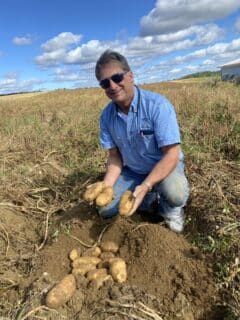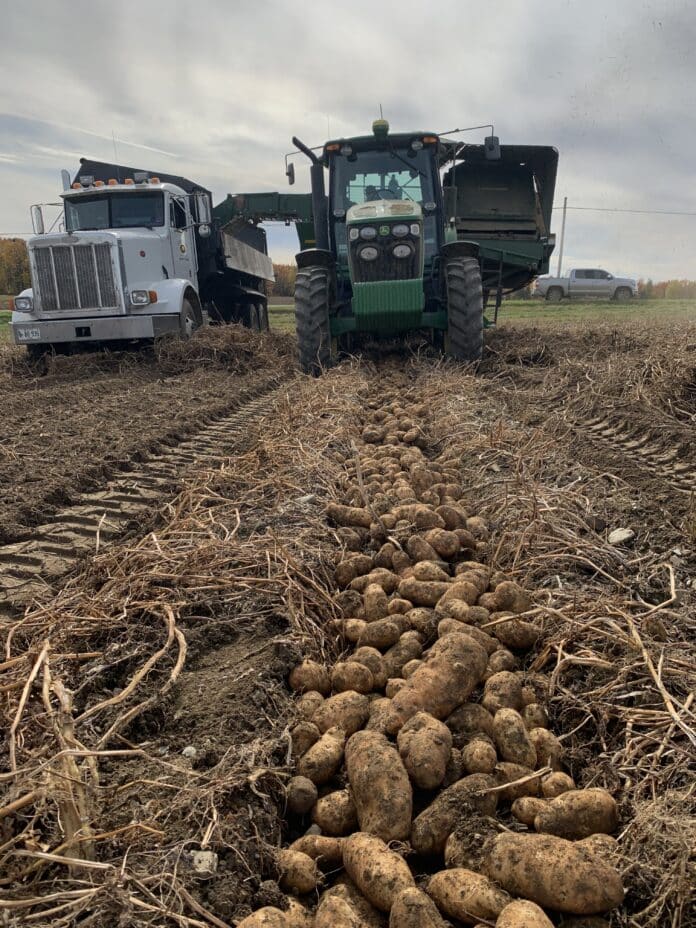By using regenerative agricultural programs, sandy soils can produce quality crops with high yields.
Sandy soils are being conquered using regenerative agriculture. Not only is it stopping erosion, but it’s also improving soil health and crop quality.
“It’s all sand,” says Daniel Corey, CEO of Daniel J. Corey Farms. “The soil is essentially sand with low organic matter, low biological carbon capture.”
Daniel J. Corey Farms consists of 1,200 acres of seed potatoes located in Monticello, Maine. In addition to Daniel J. Corey Farms, Corey also operates Seed Pro Inc. in Island Falls, Maine, which includes farming operations as well as a laboratory and greenhouses for foundation seed potatoes. He also has DeLee Produce LLC in Elkton, Fla., where he grows 300 acres of tablestock potatoes, among other crops — and battles sandy soils.
“It’s a different way of farming. You have a lot of wind and soil erosion,” he adds.
Because of problems with wind and soil erosion, Corey says it’s harder to produce high quality and yielding crops. He has worked to combat the erosion problems by bringing some of his regenerative agriculture methods from Maine to Florida — the soils in Maine are much less sandy, as they’re more of a silt loom. While some of the Maine soils aren’t conducive to row crops, they can be used for hay.
“Instead of just leaving the organic matter on the soil or in the ground, we take the hay put it through our mulch machine. We spread it on our farms to stabilize the soil,” he explains.
This practice was originally used only for their Maine operations. Even though the soils in Maine are vastly different from those in Florida, Corey was able to reap the benefits on sandy soils as well. “I was a little bit apprehensive on what it would do with the tablestock quality, but lo and behold, it’s improved,” says Corey.

Not only did potato quality improve, but so did the soil’s capacity to hold moisture, he adds. By using the mulch, Corey was able to decrease both water usage and soil erosion.
“In the June, when it gets hot, it keeps the potatoes cooler. Mulching is really working well for our regenerative agriculture program,” he explains.
Corey uses many different regen ag practices at all his growing operations. Crop rotation, cover cropping and mulching are just a few he’s utilizing.
“The idea of regenerative agriculture is to build the soils back up with organic matter,” says Corey. “By having more organic matter in the soil, I am making my soil more productive and reducing my carbon footprint. We are doing more production on less acres which makes me a more efficient farmer.”
Corey notes no matter what you’re producing, regen ag practices are important to use if you want to continue your operations for years to come.
“The biggest thing is you have to put more in than you’re taking out,” adds Corey. “In Florida, Maine or Canada, (in) all these places we need to put back more than what we take out. And I think growers are starting to realize that these things are beneficial in the long-term health of our soil and the longevity of agriculture.”
Sponsored by: 
Related Articles
845 Spud Farms is Working with Bezco Farming on Regen Ag









